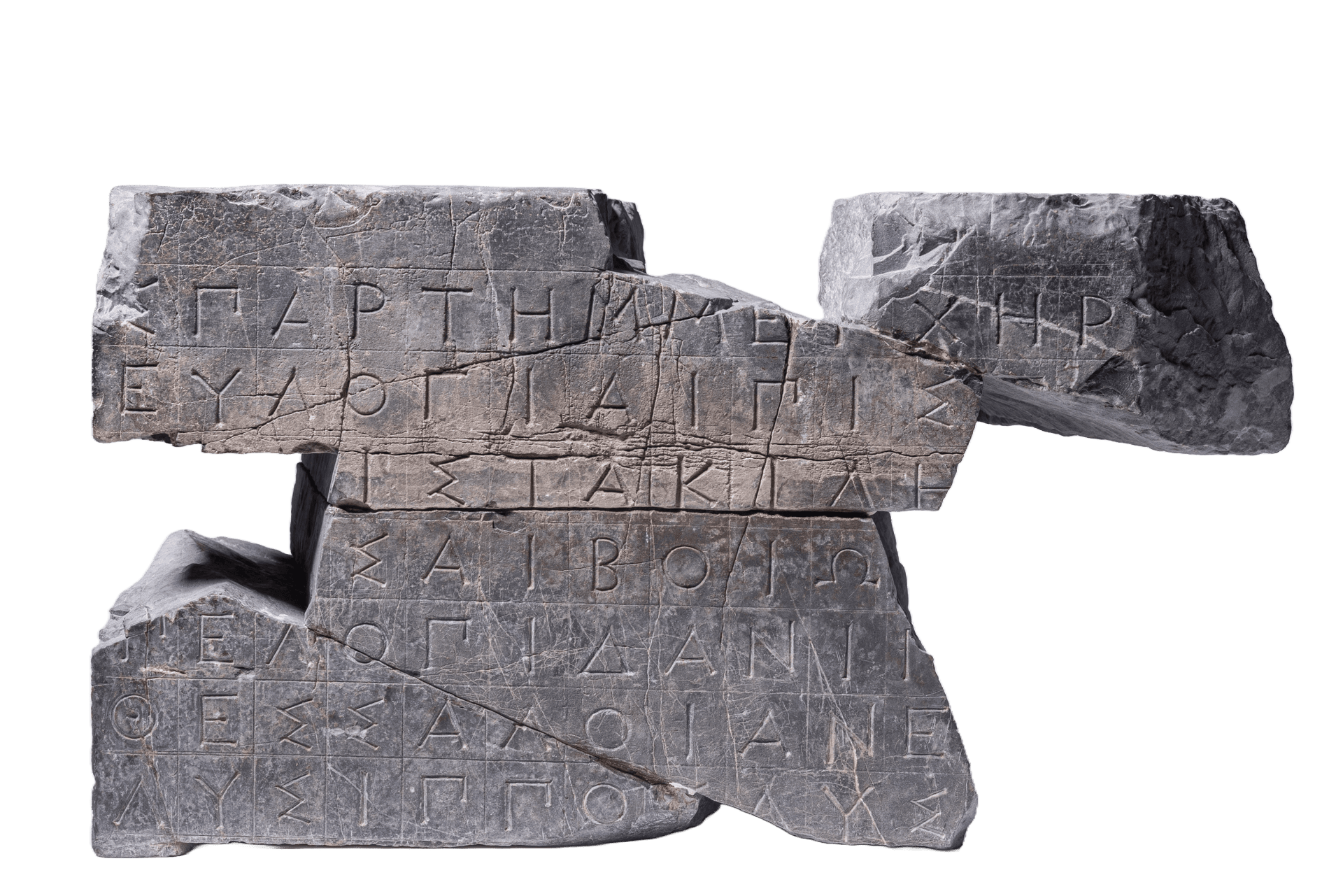Fragment of the inscribed base of a bronze statue of Pelopidas
This base of grey limestone bears a particularly elaborate engraved inscription in lines of verse. The inscription is fragmentary preserved.
Σπάρτη μέγ χήρ[ωσας——]
εὐλογίαι πιστ[————]
[πλε]ιστάκι ΛΗ[————]
[στῆ]σαι Βοιω[————-]
Πελοπίδαν Ὶπ[πόκλου Θηβαῖον]
Θεσσαλοί ἀνέ[θηκαν——-]
Λύσιππος Λυσ[—-Σικυώνιος ἐποίησε].
praise [————]
many th[————]
[ere]ct Beot? [————]
(the statue of) Pelopidas son of Hip[poclos of Thebes]
the Thessalians cons[ecrated it[————]
Lysippus son of Lys[——, of Sicyone made it]
In the first four verses, a fragmentary epigram is preserved in which the contribution of the general Pelopidas in the battle of Leuktra (371 BC) is indicated. Pelopidas, as the leader of the Sacred Band, fought bravely and broke the lines of the Spartan warriors. The famed victory at Leuktra marked the collapse of Sparta’s military power and the beginning of Theban hegemony in the Greek lands.
In the next verses the name of Pelopidas and, the Koinon of Thessaly who dedicated the statue of the Theban general in the Sanctuary of Apollo at Delphi, are preserved. In 369 BC, Pelopidas, helped the Thessalians to face the threat of Alexander, tyrant of Pherae. In the final battle the Thebans prevailed, but Pelopidas was killed.
The Thessalians asked the Thebans for permission to bury the dead warrior themselves and pay him the proper funerary honours. Among the honours, the Thessalians commissioned his bronze statue in the Sanctuary of Apollo at Delphi.
In the last verse we read the name of the sculptor Lysippus. The statue of Pelopidas at Delphi belongs to the early phase of the artistic creation of the famous sculptor.
